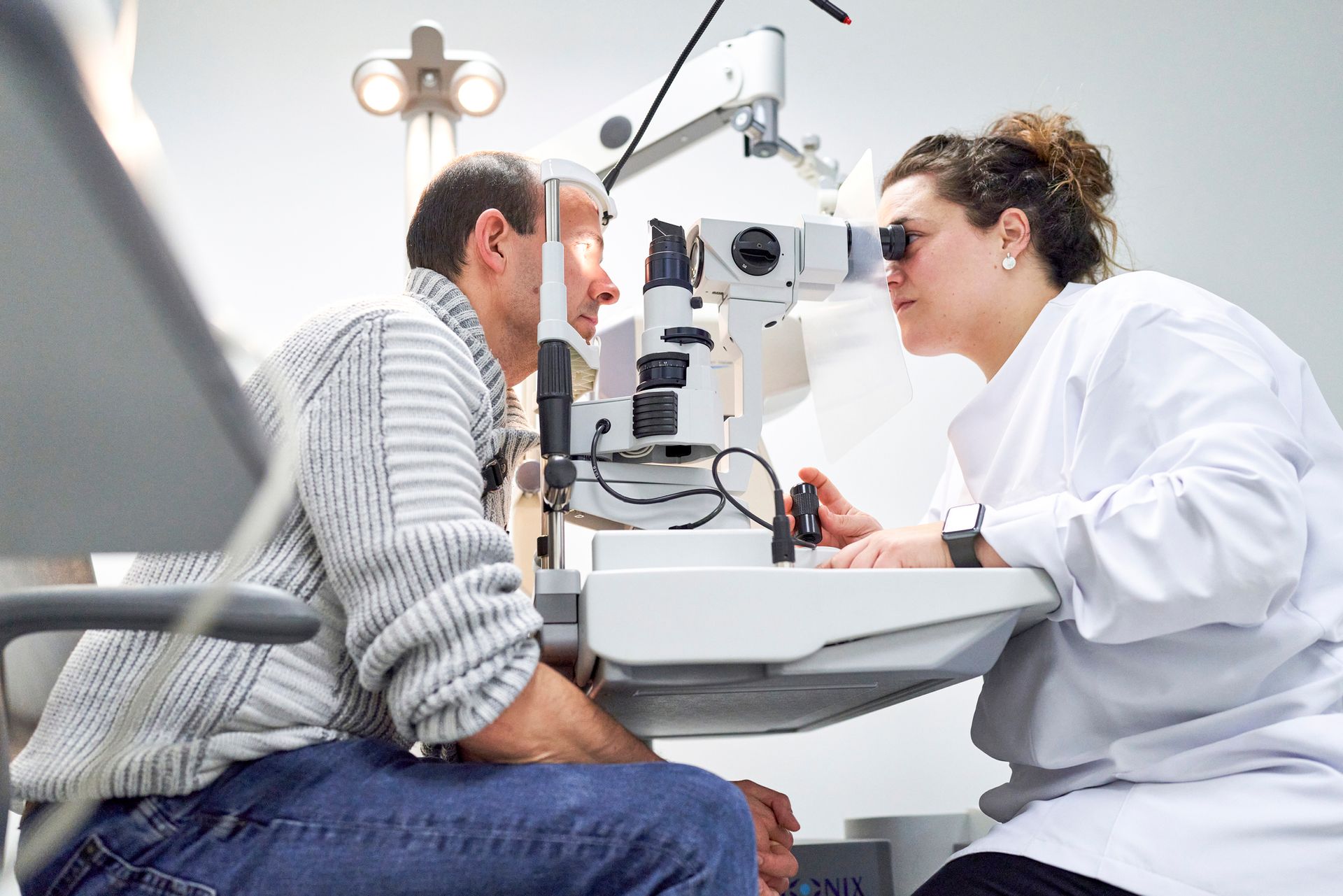Are You at Risk of Eye Cancer?
- By Admin
- •
- 03 Jan, 2020
- •
Eye cancer, while rare, is a potentially serious disease. Like other eye diseases, routine eye exams that provide early detection can potentially make a big difference in outcome. Here is what you should know about eye cancer and risk factors.
What Is Eye Cancer?
A person can develop eye cancer in one of two ways. The most common way is when cancer somewhere else in the body metastasizes, or spreads, to the eye. This is called secondary eye cancer. In other cases, when cancer originates in the eye first, it is called primary intraocular eye cancer.
Like other cancers, eye cancer occurs when healthy cells mutate in an abnormal way and form a tumor or mass. The most common type of primary intraocular eye cancer is ocular or uveal melanoma. Uveal melanomas can be quite aggressive.
The uvea is the middle layer of the eyeball. Uveal melanoma can originate in the iris, which is the colored part of the eye. More often, the cancer occurs in the choroid or ciliary body, which are the other parts of the middle layer of your eyeball. Eye melanoma can also occur in the conjunctiva, the thin layer over the white part of your eye.
Cancer that starts in the tissues around the eye - the eye socket - is called orbital eye cancer. If the cancer affects the eyelids or tear ducts, physicians refer to it as adnexal cancers.
Who Is at Risk of Eye Cancer?
Approximately 3,300 Americans are diagnosed with primary intraocular eye cancer each year. Approximately 2,500 of those cases are melanomas, according to the Ocular Melanoma Foundation. Caucasians with pale skin, blonde or red hair, light-colored eyes, and a lot of moles or freckles are at most risk of developing eye cancer.
Men have a slightly higher risk than women, and the chances of developing eye cancer increase as one ages. Other genetic factors may also increase an individual's risk. While excess sun exposure and a previous skin melanoma may be a risk factor, these are as yet unproven.
What Are the Symptoms of Eye Cancer?
The signs and symptoms of eye cancer vary depending on the type and location of the cancer. Some eye cancers will not have any obvious signs, which is one more reason regular eye exams are so important.
When symptoms are present, a person may experience blurry vision, seeing spots or wavy lines, partial or total vision loss, a dark spot in the eye, and rarely, eye pain. However, because eye cancer is so rare, these symptoms are much more likely to be from other causes so don't worry prematurely.
How Is Eye Cancer Diagnosed and Treated?
If your ophthalmologist is concerned about your eyes after a standard exam, they will likely perform more specialized tests. For example, an ultrasound will better show the structure of the eye and provide a close-up of the mass of cells and their precise location. An ultrasound will also help guide the doctor if they opt to perform a biopsy. The doctor may also inject dye into your bloodstream to better see the tumor.
Eye cancer treatment options vary depending on the type of tumor and where it is located in the eye. A surgeon may remove a small mass if it doesn't interfere with vision. A large tumor may require the complete removal of the eye. Radiation and occasionally chemotherapy are other eye cancer treatment methods.
Thankfully, cancer of the eye isn't a common condition. However, it can be quite serious and regular eye exams can help with early detection. If it's been a while since you have seen an eye doctor or you are having problems, contact us today to schedule an appointment.










